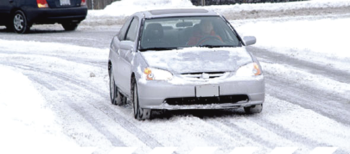31 Division Community Bulletin Winter Safety Tips

1. PICK THE RIGHT SHOVEL
Choose the tool that suits your size. Using a smaller shovel will keep you from lifting more weight than you can handle safely.
2. BE PREPARED
Check the weather regularly and give yourself an extra few minutes in the morning to clear your entrance or walkway as well as around your mailbox. Ensure stairs and walkways are in safe condition, and remember to keep a shovel on hand.
3. SHOVELING SAFELY
When shoveling, it’s best to stand with your feet about hip-width apart for balance.
4. DON’T DO THE TWIST
Avoid twisting your body to move snow. Instead, reposition your feet in the direction you’re taking it.
5. LEARN TO LIFT 
Always bend at the knees to avoid back injuries, and tighten your stomach muscles as you lift.
6. SAND AND SALT
Generously cover icy patches with salt or sand to keep your delivery personnel and other visitors from slipping and falling.
7. FOOTWEAR
It is important to choose a good pair of winter boots, ice grippers on footwear can help you walk on hard packed snow and ice – but be careful! Grippers become dangerously slippery and must be removed before walking on smooth surfaces such as stone, tile and ceramic. The outer material of winter footwear should be water repellent and/or waterproof to keep the feet dry.
8. CLOTHING
Dress properly and use layering to keep you warm when outside in the winter months. Ensure winter footwear is insulated to provide comfort for the temperatures during the winter months.
9. WALKING
Slow down and think about your next move. Keep your body as loose as possible; spread your feet to more than a foot apart to provide a base of support. Make the step small, placing your whole foot down at once.
10. STAIRS/STEPS
If available, use a handrail. Maintain your balance by looking with your eyes and minimizing the shifting of your head. Don’t take chances when steps are covered with snow or ice.
11. IN YOUR VEHICLE
Try and keep the inside of the vehicle free of snow and moisture as much as possible, wet floor can cause slipping hazards.
OTHER LITTLE KNOWN FACTS:
o A fresh snowfall can cover up hazards such as icy patches or uneven surfaces.
o Ice is most slippery at around plus 1 or 2 degrees Celsius due to the film of water that forms on the surface.
o Areas in shadows still can have a layer of ice despite temperatures being above 0 degrees Celsius.
o Use caution when walking around vehicles as tire marks can pack the snow and make the surface slippery.














